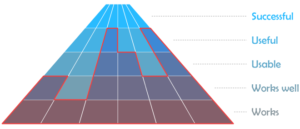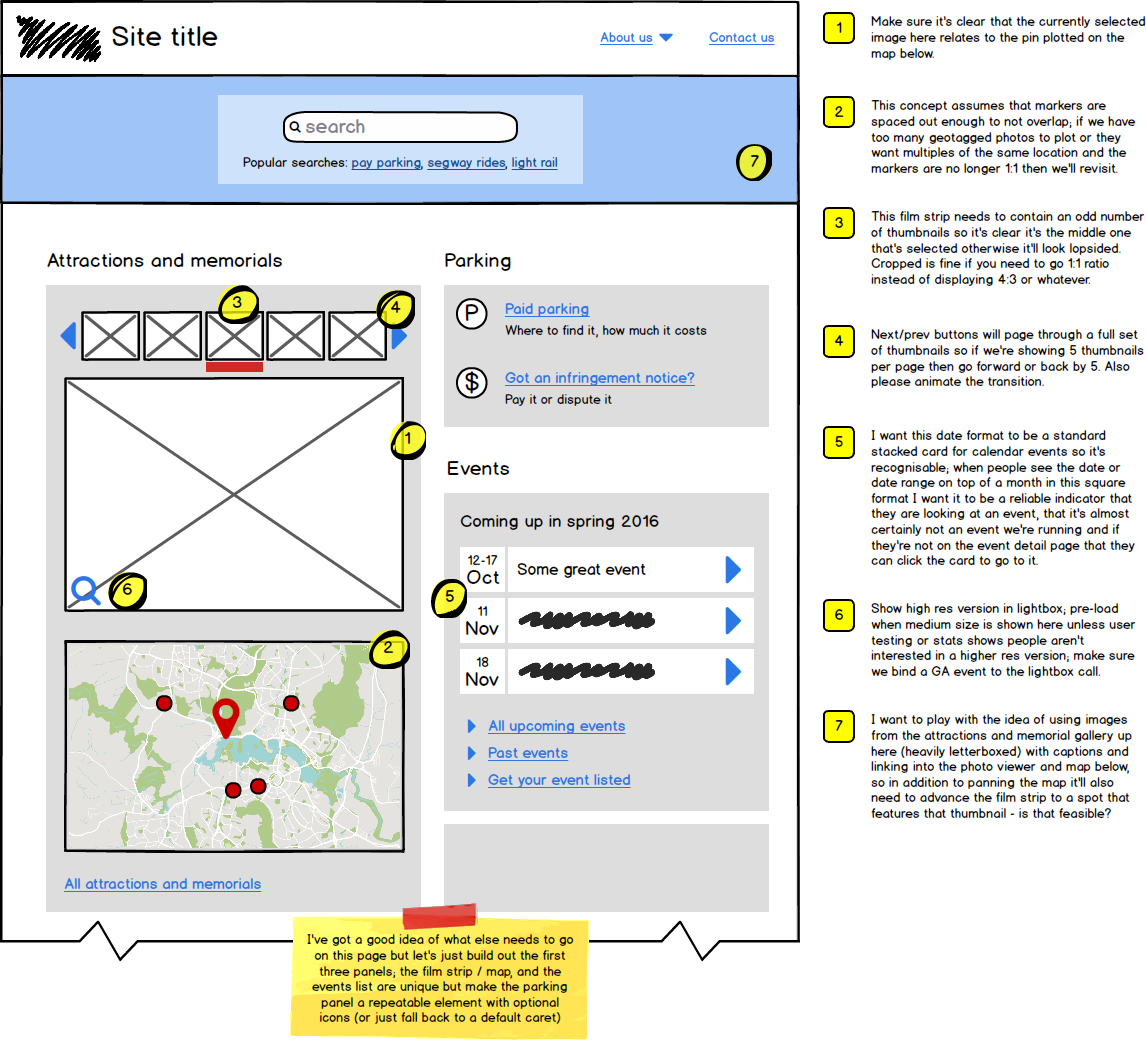Nathanael Coyne on Getting UX the Respect it Deserves
 You may know our latest Champion, Nathanael Coyne, from his top-notch UX blog purecaffeine.com. In it, he chimes in on many of the hot topics in UX discussions today, often with well-reasoned arguments against conventional wisdom. This post on the role of empathy in UX design is a good example.
You may know our latest Champion, Nathanael Coyne, from his top-notch UX blog purecaffeine.com. In it, he chimes in on many of the hot topics in UX discussions today, often with well-reasoned arguments against conventional wisdom. This post on the role of empathy in UX design is a good example.
One post that had me nodding my head in agreement is his advice for designers on how to be effective in the real world of UX. I also enjoyed his thoughtful take on what's broken with the Minimum Viable Product (MVP) model and how to take a better approach.
In our interview below he offers even more advice for UX designers looking to get traction in more traditional development environments or just wanting to level up their skills. Read on!
Q&A with Nathanael Coyne
What industry do you work in, and what is your title or job description?
I'm a Senior UX Designer currently working as a consultant in the public sector predominantly for Australian Federal government departments and agencies. At the moment I'm working with the Australian Maritime Safety Authority helping with the software aspect of a significant organisational change.
What kinds of things are you excited about in your industry?
Working in the public sector typically means sizeable well-funded projects where I have the opportunity to improve the delivery of government services to citizens, business, and visitors. Unlike commercial projects where it's all about customer conversion and maximising profit, the objectives and metrics for government are often about making online services easier to access, useful and less bureaucratic to facilitate transactions and build trust; metrics that I feel good about.
I've worked across many sectors in government - health, business and industry, taxation, education, welfare, tourism, law enforcement and now maritime safety. I've found meaning in all of those roles and feel they provide opportunities to make a difference in a way that commercial roles don't.
I am emotionally invested in what I do for a living and it's important to me that I feel I'm doing something worthwhile; I don't go to work just to earn a salary.
What suggestions do you have for someone looking to succeed in your role or industry?
Digital product design as we understand it is still a largely unknown profession here in Australia and even in 2016 often conflated with what graphic designers do. People talk to me about "look and feel" and colour palettes, icons, typography. Being an effective designer requires tenacity and an unshakable belief in the value of what you do.
Good designers help their teams develop empathy with users. Get out of the building. Grab your co-workers and drag them out of the building. Go do user research and get actual quotes from real people to demonstrate what they're struggling with day to day. If you can't get officially-endorsed research off the ground then go do guerrilla research. If you can't do that then lean more heavily on your usability heuristics, but put people at the centre.
Share your findings. Don't expect people to read reports, so stick quotes up on walls, organise presentations and storyboard what might happen if the team ignores user-centred design. Balsamiq with its bold strokes and exaggerated component shapes is great for printing because it's legible at a distance.
You need excellent skills in communication, persuasion, storytelling and formulating logical arguments based on empirical evidence. You also must have the fortitude to fail and come back the next morning bringing all your creativity, curiosity, and determination.
Once you win people over and start focusing on people instead of technology it's exhilarating. Get over that hump and you can start to work freely, collaborate with your team, speak the same language and more readily get support to conduct user research and user testing. It's a beautiful thing when even a developer won't accept something as done until it has passed user testing, and Scrum sprint reviews look at what is valuable to users rather than bolting on more functionality.
 Nathanael's Pyramid of Quality diagram based on Gojko Adzic's work
Nathanael's Pyramid of Quality diagram based on Gojko Adzic's work
Expand your toolkit. Learn a range of design, research and facilitation methods and understand where to apply them from exploratory and formative phases through to validation. Choose the right tool for the job whether it's contextual inquiry with five users, a survey with five hundred users, participatory design workshops with a dozen users and your team, paper prototyping, polished slide decks for executives or whiteboard sketching sessions.
Why and how do you use Balsamiq Mockups?
I've been using Balsamiq for years! It's my favourite tool for rapid low-fidelity wireframes. I'll often churn out a dozen iterations of a screen over a couple of days before I'm even ready to share it with my team. The relatively recent feature of alternate versions is very cool for that, although usually the final version pulls bits from multiple iterations of a design.
No other tool - software or analog - supports that mode of work as effectively as Balsamiq. Most of the time attaching Balsamiq Mockups files to JIRA issues contains sufficient guidance for developers to implement new or modified screens and flows.
I also use the linking feature to create clickable prototypes to help demonstrate flows and conditional logic to clients and developers. It's much easier to implement and test than more advanced prototyping tools that you spend more time configuring and debugging than actually designing.
 One of Nathanael's recent wireframes
One of Nathanael's recent wireframes
Do you have any feature ideas or suggestions for how we can improve our product(s)?
Responsive design. We don't do desktop and mobile versions anymore, we do breakpoints, grid layouts, media queries. Some wireframing tools have started having a go at it and I haven't been impressed with any of them. It's a tough one and so far the only satisfactory way I've seen to design fully responsive layouts is to design straight in code with Bootstrap or Flexbox.
I'm sure the Balsamiq team have thought about it and whether it's appropriate to tackle potentially complicated functionality with a simple tool like Balsamiq Mockups, but it's inevitable that it'll have to support it and move away from static fixed width design artefacts.
There are a host of other things that sometimes I wish Balsamiq would support but then I remember why I love Balsamiq; because it's simple, it knows what it is and doesn't try to be more. I know where it fits into my process and it's perfect for that role.
I would love to see Bootstrap components support natively. I know it's available as a Mockups To Go download, but it'd be much more convenient if components could be configured via the Inspector rather than pulling apart symbols.
I've already mentioned a fixation on static layouts, but there are other seemingly small things like placeholder images and lorem ipsum text. I still regularly use both, but often I see them used out of laziness on par with user stories that read "As a user I want to create a thing because I want to create a thing". Is the text important or not? Does the image add anything to the content or is it just to fill in some whitespace?
I think Balsamiq could encourage designers to think about the purpose of user interface elements. If they don't want to write copy, fine use lorem ipsum filler text but prompt them to describe what they expect to be written and if high-quality copy can't be provided to suit that purpose then maybe it should be yanked out of the design, unless you're designing generic templates to sell on TemplateMonster.
What advice would you give to someone on a very reactive team that feels it has to implement everything that a customer asks for, even at the expense of usability for the broader audience?
On small projects there's rarely time to build rapport with a client and develop a relationship as a trusted advisor, so for the small and fairly inconsequential jobs you end up just being a pixel pusher. I prefer the longer-term projects where I can educate clients about usability over functionality, simplicity, recognition instead of recall, learnable patterns and idioms.
By sharing knowledge and demonstrating the benefit of a user-centred approach to design, clients will be more trusting of your expertise and recommendations.
But even on the small projects I have no problem with pushing back on requests that are counterproductive and will undermine the product or service's effectiveness and desirability. It's best to have evidence to back up your argument against something, just as your should have evidence to support your recommendations and remember not all arguments are won through logic. The goal isn't to win an argument at any cost but to ensure that overall you and the client can deliver a substantially and measurably better outcome for customers and users than would be achieved if you weren't involved at all... which might be the outcome if you fight too hard and find yourself unemployed.
You should also approach clients and stakeholders the way you do customers with research. If it helps, imagine yourself as a journalist or forensic psychologist and seek to uncover why they're asking for specific things that run contrary to establish patterns and recommendations. Do they feel like they're losing control or haven't had enough influence in the design? Are there latent assumptions and motivations you need to expose and discuss? Who are they feeling pressure from and what are they really wanting to accomplish?
Designers should be proficient at looking under the hood and not accepting anything at face value. Analysts call it root cause analysis and fishbone diagrams; Our approach is less structured and more about empathy and curiosity.
What are some quick or easy ways to educate other members of the software team about the value of UX?
I don't think there are any quick ways. I recently delivered a presentation to a new project team with a slide deck that challenged all sorts of perceptions about what my priorities should be and how I spend my time, about value and impact over deliverables and how wireframes and user interface design were a small part of the role.
That presentation had the biggest impact in getting UX properly integrated into the approach and methodology but really it was just another nudge. I felt like a bit of a nag, but it was absolutely necessary to keep the pressure up or risk fading into irrelevance and fall back to being the wireframe guy.
UX design is still relatively new in government and other public service projects. What are some examples of great UX work happening in the public sector right now?
There's very few design-led projects happening in government. There are thousands of UX'ers employed in government but most agencies are fairly low in the usability maturity model and designers have limited success. The truly design-led projects in government at least here in Australia are coming out of the Digital Transformation Agency (DTA) who has been tasked with establishing approaches and criteria for design-led projects and coaching agencies through a four-stage approach of Discovery, Alpha, Beta and Live using agile methods, a strong experience design and user research stream, getting feedback and deploying incrementally.
It's a wonderful opportunity for government right now but also incredibly difficult for most to get their heads around, especially for those who have zero experience with either agile or user experience design and design thinking. The DTA is doing some great work and has hired awesome people including most of my friends to build that capability and expertise.
I don't know how successful the new business.gov.au has been but I trust the process and it's certainly stark in its difference from typical government websites and online services with its clear alignment to business lifecycle and goal-oriented content.
Where do you look for inspiration? Are there some websites or designers you follow? What else inspires you?
For visual design I get inspiration from nearly every website I visit and every app I use. I take a lot of screenshots of things I like, things that jarred, quirks and errors, designers trying new things (and then often discarding them months later). LinkedIn falls into that last category a lot - they struggle with design consistency and seem to invent a new pattern for everything, sometimes the same content on different screens. I don't know what's going on over there but they need to take a leaf out of Spotify's book.
My collection of screenshots in Evernote is now over 2,000 and great for getting ideas for form layouts, home screens, faceted search filtering controls and introducing new features. It's important to be confident in your ability to unobtrusively and clearly highlight changes in sites and applications if you want to persuade your team to deploy frequently and get feedback from users.
I also refer to my collection of inspiration to highlight the dangers of trying to cram all the features and controls that can be imagined onto a screen or dialog, and I use contrast to show how two similar organisations implement the same feature with one following a "simple is useful" paradigm against one who believes in "control is power", for example requesting email notifications in Australia Post (one checkbox) versus USPS (three text fields, a text area, two drop-down lists and three checkboxes).
I also look for inspiration for how to think about design, how to explain design and how to become a better well-rounded designer on top of the technical skills of research techniques, responsive design and accessibility. Dave Gray, Jon Kolko, Marc Stickdorn, the Google Ventures team. I've been thinking about Gordon A. Mackenzie lately, author of Orbiting the Giant Hairball: A Corporate Fool's Guide to Surviving with Grace (1996). He was eccentric, experimental, out there. He had fun and did some great work but is largely frowned upon. I want to bring some of that back.
I think designers are often too conservative, too much like business analysts. We have enough analysts, we have enough people who sweat the details and documentation. We need more designers, creative people who disrupt the status quo, ask the awkward uncomfortable questions and bring something different to the table. Not just produce design deliverables or do design but be designers in everything. If a meeting isn't being productive, then design a better one even if it means rearranging the room or getting people off their bums and in front of the whiteboard. Push boundaries and norms, don't get comfortable. People hire designers because the existing way of working isn't getting them the results they want. Be that X factor.
Wow! Thank you Nathanael for all the great advice!
Do you have a story to share about the awesome things you do with Balsamiq? Send an email to champions@balsamiq.com with your stories or blog posts!



Comments (2)
How did he create the notes with the numbers in the same color as the callout as shown in the image?
Hi nilanjan,
You can easily create these by using a Shape control with the following properties:
– Rounded Rectangle shape
– Background color is the first Yellow (yellow (ffff00))
– Opacity 50% if needed
Hope this helps! Please reach out to support@balsamiq.com if you need anything else